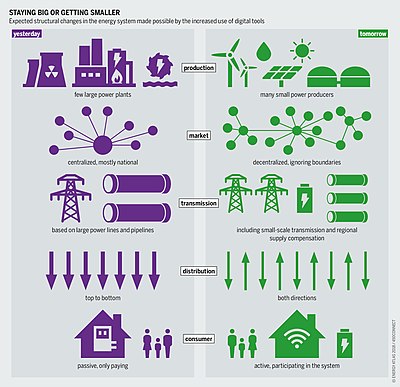My experience as Consultant in Energy & Utilities at Atos Worldgrid
In this article, Léopoldine FOUQUES (ESSEC Business School, Global Bachelor of Business Administration, 2017-2021) shares her experience as Consultant in Energy & Utilities at Atos Worldgrid.
About Atos Worldgrid
Founded in 1997, Atos is a French multinational firm specialized in information technology (IT), headquartered in Bezons, France. Member of the CAC 40 index, Atos has been positioned as a leader in cloud infrastructure, cybersecurity, and super calculator and operates in 71 countries.
As a leader in digital transformation, Atos supports its customers in large-scale industrial projects and covers a wide range of sectors: financial services and insurance, healthcare, manufacturing, public sector and defense, resources and services, and telecommunications and media.
Since 2010, Atos has specialized in a secure and decarbonized digital through the brand “Atos Worldgrid”. The purpose of Worldgrid is to offer an extensive ecosystem of technology partners and implement critical Information technology / Operational technology (IT/OT) convergence projects. It provides services along the entire energy value chain to over 250 clients worldwide, operating all the energy sources, as oil & gas, biofuels, wind, solar, sea, hydro, coal, and nuclear, and covers all the distributed grid, from the generation to the retail.
My experience at Atos
My interest in the technology field was further intensified during my studies at ESSEC by following the course on blockchain and big data. That is why I came to work for Atos, a leading IT group in the digital transition, for a two-year apprenticeship.
Working as Consultant in Energy & Utilities in the Atos Worldgrid entity, I became aware of the interest of science applied to ecology to address current challenges, particularly those related to the digital and energy transition. During this apprenticeship, I became familiar with a complex and fast-moving environment. I put into practice what I had learned since the beginning of my studies and contributed to many projects with a proven innovative dimension. Thus, I had the opportunity to work on a wide variety of missions. In particular, I conducted several studies on the energy sector, contributed to the design of commercial offers for startups, and developed a platform, in partnership with Méteo-France. These missions allowed me to put into practice my managerial qualities and my customer orientation. On the other hand, my curiosity, and my appetite for the subjects I studied led me to work on information systems and asset management for companies in the energy and utility sector.
Why is necessary to put digital into the energy sector?
Atos is one of the leaders in services for Smart Cities (intelligent and connected cities). The enterprise has a wide range of solutions for cities and local authorities, covering consulting, systems implementation, user-centered design and managed services.
During my internship I had the opportunity to work on many subjects that are part of Smart Cities projects. Furthermore, I became aware that digital was at the heart of all transformation projects.
For many actors, the Smart City will be the “natural” environment of the improved human being. Therefore, we intend to provide the city with digital knowledge and technologies. Faced with the need for a change in ecological strategy, the value of new technologies is becoming increasingly important in discussions. The conjunction of ecology and IT was also widely discussed at the Davos Economic Forum in January 2020. It is in this context that Big Data initiatives have multiplied.
In the emerging context of Smart Cities or connected cities in which uses are rethought and resources are optimized, Big Data is becoming increasingly important. Indeed, faced with the exponential volume of data produced by various actors, controlling it becomes an essential tool that cities must appropriate. The data would enable the development of new services for the city, optimize existing ones and reconcile citizens’ expectations with current policies. Finally, is the central element of the most innovative projects, and constitute most city modernization projects. These technologies open the door to new conjunctures and represent the foundation stone of the cities of tomorrow.
The valorization of this data is one of the main challenges for territories and leads to the rethinking of new tools. Thanks to the mass of data that can be collected, both public and private players can anticipate future innovations and developments and thus lead the city towards a sustainable and responsible approach. The use cases are many and are very often based on the triptych: mobility, energy management and street services, i.e. services for both local or national authorities and consumers.
At the heart of the connected city, the smart energy grids must learn to be resilient.
In order to succeed in the energy transition, the electricity system is undergoing considerable change: development of renewable energies, deployment of electric vehicles, the emergence of new use cases, etc. To facilitate this transition, the energy grid must become more efficient. But the smart grid is not born smart, it becomes smart. Atos Worldgrid aims to make its cities a reality. The solutions support governments in their mission to provide intelligent integrated services to their citizens and economic partners.
In 2010, The French Parliament adopted the Law on National Commitment for the Environment : The Grenelle II Law. The Grenelle II law includes energy and climate concerns in the French objectives, with the aim of reducing consumption and greenhouse gas emissions. In addition, the law accelerates the deployment of renewable energy. Among other things, the state is committed to building at least 500 wind turbines per year.
Faced with this development of natural energies, the question of grid stability becomes essential. Indeed, these weather-sensitive energies are not predictable, and a bad estimate of the production can lead to very strong price fluctuations and a shortage of energy. The renewable energy produced must be estimated accurately to avoid a large gap between the energy produced and the energy sold, as the energy produced is not linear. A financial imbalance has repercussions on the whole value chain, from producer to final consumer. To prevent producers from producing too much or too little or aggregators from disturbing the balance of the grid by buying too much or too little, tools must be designed. This is the main challenge for companies like Atos and to achieve a transition to renewable energy.
At the heart of these smart grids and this revolution, the deployment of smart meters, such as Linky, developed by Atos, is today an essential building block for the success of this transition. Installed directly in French homes, it measures the daily electricity consumption of the home and transmits this data to the network operator. Its advantages are numerous. Firstly, its scope is ecological since it facilitates the insertion of renewable energy sources into the energy network. By collecting information on household consumption, renewable energies are better distributed and optimized, which contributes to the flexibility and therefore the stability of the network. Also, the consumer is also more widely integrated into the process. With smart grids, it is consumption that adapts to production and thus gives the consumer a new role. The Linky smart meter is an essential building block in this logic.
To support the energy transition and encourage the massive integration of renewable energy sources and new uses of mobility, network infrastructures have had to adapt quickly. In addition to the new dimensioning of the network, which has become a smart grid, the digitization functions resulting from Big Data have provided optimization and control tools for better operational performance. These advanced models have made it possible to improve the observability and controllability of the network, for better control of renewable energy connections. Atos is active in this area. In collaboration with Méteo France, It has developed service platform that uses Machine Learning algorithms to estimate the production of renewable energy in detail.
What I learned during my internship
During my work placement I acquired certain consulting skills, and I also learned to work in a team and to manage teams, to lead working groups. I have acquired both managerial and technical skills.
Above all, I discovered a sector that was totally unknown to me. As I progressed in the missions, I became familiar with a specialized vocabulary and gradually understood the technical workings. This experience in a digital services company was very enriching, both personally and professionally, and gave me the desire to continue in this direction.
Related posts on the SimTrade blog
▶ All posts about Professional experiences
▶ Anant JAIN My internship experience at Deloitte
▶ Youssef LOURAOUI Smart Beta industry main actors
Useful resources
smartgrids Introduction aux smart grids
European Commission Smart grids and meters
European Commission Energy modelling
About the author
The article was written in November 2021 by Léopoldine FOUQUES (ESSEC Business School, Global Bachelor of Business Administration, 2017-2021).


